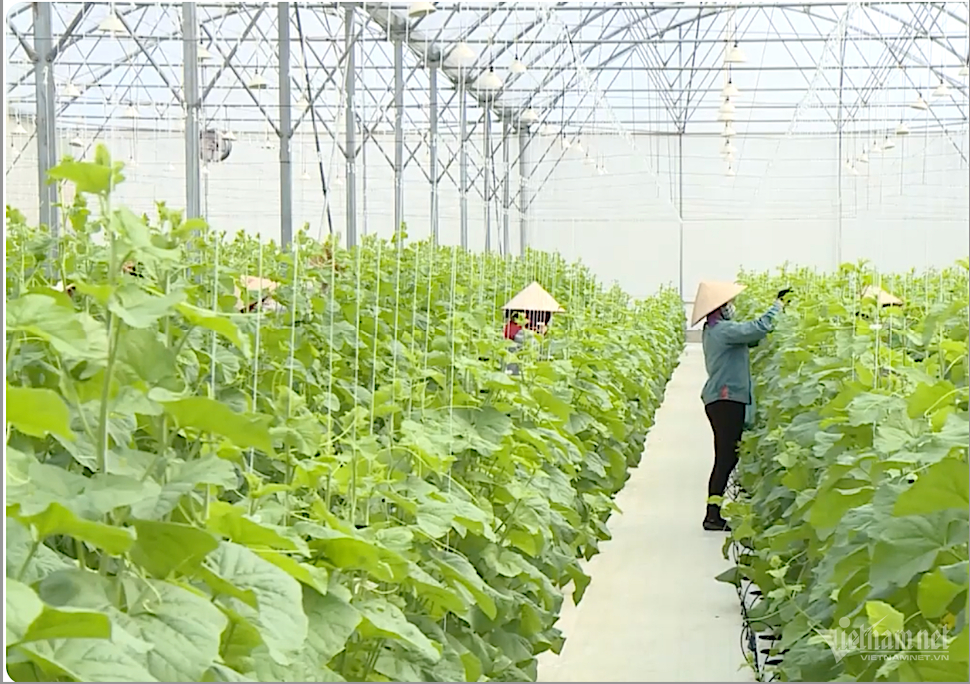
The northern mountainous province of Hoa Binh is home to many ethnic minorities. The province aims for economic development with industry as the driving force, tourism as the spearhead, commodity agriculture, clean agriculture, and organic agriculture as the foundation.
Hoa Binh province is located at the gateway to the Northwest region of Vietnam, with a natural area of 4,662.53 km2. Geographically, Hoa Binh is the buffer zone between the Northern Delta and the Northwest region, connected by Highway 6 and the Da River.
There are 15 ethnic groups in the province, of which the six ethnic groups of Muong, Kinh (Viet), Thai, Tay, Dao, and Mong account for 99.92% of the total population.
Hoa Binh has diverse resources such as forest resources, tourism resources, minerals, mineral water and fauna.
Actively promoting international integration and connection with major economic centers
According to the development planning of Hoa Binh province for the period of 2021 - 2030, with a vision to 2050, by 2030 Hoa Binh will reach a fairly high level of development, with average income among the leading groups in the Northern midlands and mountainous areas, high-quality human resources, completing the goal of digital transformation in all fields, and the province's competitiveness among the group of provinces with fair well level.
By 2030, Hoa Binh economy will be developed with industry as the driving force, tourism as the spearhead, commodity agriculture, clean agriculture, and organic agriculture as the foundation, linked with a synchronous and modern infrastructure system and green, smart urban systems. Natural resources and the environment are strictly managed, exploited and used effectively;
The people's material and spiritual lives are improved, and the traditional cultural identity values of the nations are preserved and promoted; actively participating in international integration and connection with the country's major economic centers; National defense and security are firmly guaranteed.
Specific economic targets include: the average economic growth rate in the period 2021 - 2030 to reach 9%/year, of which agriculture - forestry - fisheries to reach about 3.5%, industry - construction to reach about 10.8%/year, services to reach about 10%/year, the average growth rate of social labor productivity to be over 8%/year;
By 2030, the average GRDP per capita to be 168 - 170 million VND; the agriculture - forestry - fishery sector to account for about 15%, industry - construction of about 47%, services of about 34% of the province’s economic structure.
Turning tourism into a key economic sector
Regarding the direction of development of important industries: the service sector will develop rapidly, diversely and sustainably, with an average annual growth rate of about 10%, accounting for about 34% of the province's GRDP structure by 2030.
Tourism will be turned into a key economic sector. The province will increase investment in infrastructure for services and tourism; diversify tourism products at the Hoa Binh Lake national tourist area; develop cultural tourism, focusing on the lives of ethnic minorities, religious and spiritual tourism; promote health care services and luxury resorts. Priority will be given to building golf courses and real estate associated with golf courses;
Promote the application of information technology and digital transformation in service and tourism management and development; Strengthen promotion and introduction of resources, potential, advantages of tourism development, and cultural identities of ethnic groups in Hoa Binh province; Focus on organizing tourism events and related activities to form inter-provincial and inter-regional tourist routes.
Promote import-export activities
According to the provincial planning, Hoa Binh will consolidate and develop goods distribution channels in a civilized and modern direction; Harmoniously combine the development of traditional forms of commerce with the development of e-commerce.
The province will also focus on building logistics service centers in Hoa Binh and Luong Son cities; develop multimodal transport, financial, banking and insurance services; Form a healthy and sustainable real estate market, associated with planning a network of urban areas, and new residential areas.
Develope key agricultural products
The agriculture, forestry and fisheries sector will develop in an environmentally friendly way, adapting to climate change, with an average annual growth rate of about 3.5%/year, accounting for about 15% of the province's GRDP structure by 2030.
Hoa Binh will focus on the research, transfer and application of science and technology to agricultural production; Promote the development of high-quality agriculture, clean agriculture, organic agriculture, circular economy, and reduce greenhouse gas emissions;
Develop key agricultural products including: fruit trees, medicinal plants, timber trees, livestock raising and aquaculture; Forming large-scale specialized farming areas and stable raw material areas for the agricultural and forestry product processing industry;
Thoroughly grasp and promptly deploy policies to attract investment in rural agriculture in accordance with the actual conditions of the province; Focus on training and improving the quality of human resources working in the agricultural sector; Continue to reorganize agricultural production based on the value chain; Promote the development of cooperative economics, farm economics, and sustainable forest management.